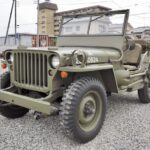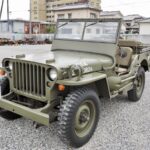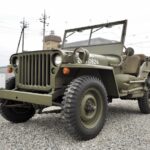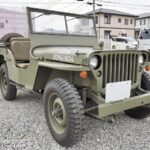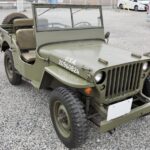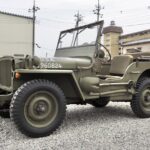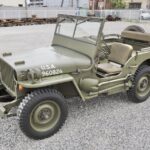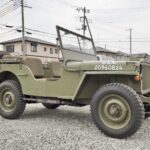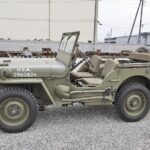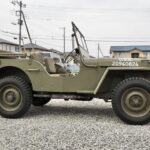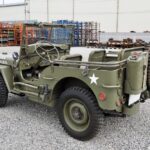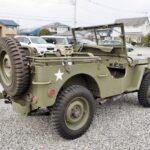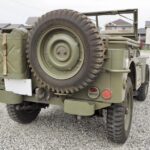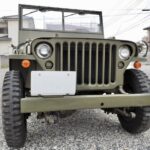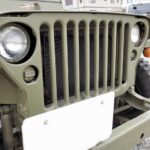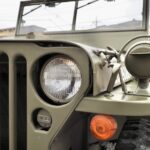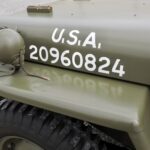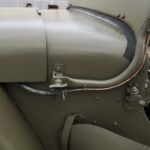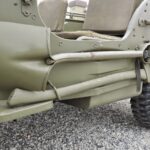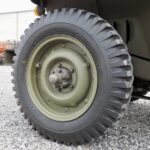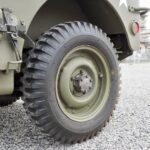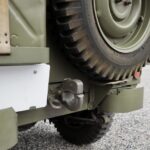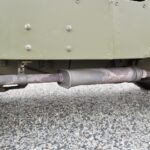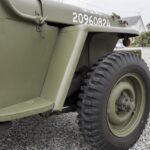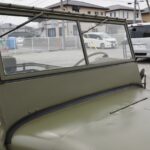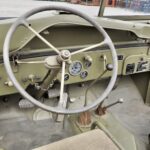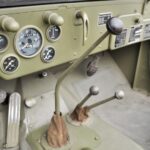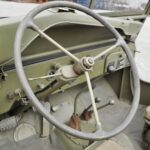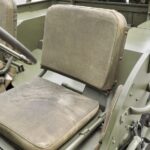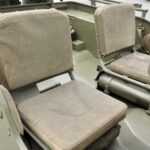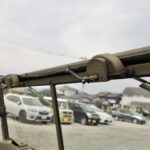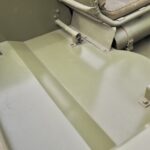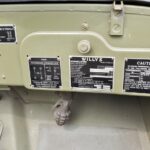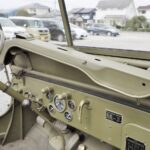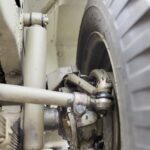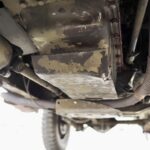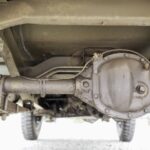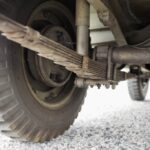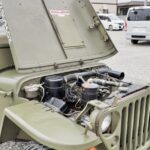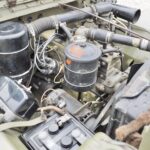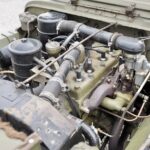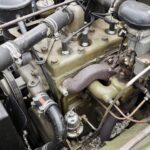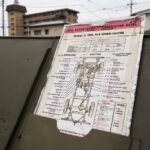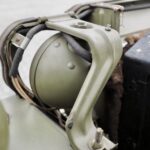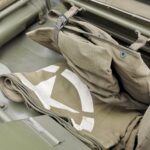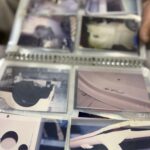TOP>Stock List>1944model Willys MB
1944model
Willys MB

↑↑↑Please watch the archived video above with audio if possible...
A meticulously full-restored, museum-grade 1944 Willys MB—reborn after more than 80 years, thanks to 12 years of unwavering devotion by a professional mechanic. This fully functional military classic defies all conventional wisdom—a 1944 Willys MB you can drive every day, like no other rolling piece of history.
“Sometimes I just take everyone out in it for lunch around the neighborhood,” says the veteran owner—a professional mechanic with 51 years of experience—with a casual grin.
And there it stands beside him: a 1944 Willys MB, looking as if it had just rolled off the set of a wartime film, exuding an aura of timeless authenticity—like a flashback to the 1940s, frozen in steel.
The 1944 Willys MB we are featuring today is not just a “restored classic.”
This particular machine has been painstakingly resurrected—a museum-grade, fully operational piece of rolling history, reborn through an uncompromising full restoration fueled by the passion and persistence of every owner it’s had.
A portion of the restoration records and materials is available in the attached Dropbox folder (see link below).
The process is documented in remarkable detail with numerous photographs, meticulous logs, and even part numbers of rare NOS (New Old Stock) components sourced from the United States.
🔗 [Full Restoration Documents – Dropbox Link]
https://www.dropbox.com/scl/fo/wyaega6ynqtmojrxjpc7e/AE9YXL2X7zT3JtCJjQmvBBg?rlkey=flecy2zasiiolacmvyfsi54ti&st=kl20qddw&dl=0
The foundation of this restoration was a genuine 1944 MB, with serial number 326127 clearly stamped on the original caution plate. The original serial plate remains mounted on the frame (MB326127), and the body gusset displays the correct body number (47988), underscoring the vehicle’s exceptional authenticity.
Underneath, rare NOS suspension parts—now nearly impossible to source—were used, alongside highly reliable Japanese components for the driveline bearings and other running gear.
The brake master cylinder, clutch system, and steering shaft all received professional attention using high-quality parts.
The frame was sandblasted down to bare metal to remove old paint and rust, then treated with anti-corrosion coating.
The body underwent a caustic soda bath at a specialty shop in Japan to remove rust. Most of the rear floor was reconstructed except for a small portion under the driver’s seat. The result is a body that is robust and faithful to the original—far from the fragile, imprecise Filipino-made reproductions that sometimes circulate the market.
With exceptional attention to historical accuracy, this MB stands out with its high degree of originality.
Rare “F-marked” components—originally for the Ford GPW—remain on the hood and windshield, adding undeniable character and presence.
The fuel tank is a precise reproduction unit, treated with anti-corrosion coating to ensure longevity.
All gauges were either fully restored or replaced with authentic NOS units.
Every switch and electrical component was also replaced with period-correct NOS parts.
The windshield frame, seats, and even the vacuum wiper motor remain true to their original form.
Mechanically, this Willys MB is just as exacting.
The engine, transmission, and transfer case were all overhauled with a combination of new parts and hard-to-find NOS components.
The engine block was sleeved for increased durability; the crankshaft re-machined; the cylinders honed; pistons, camshaft, valves, and oil pump replaced with new parts.
Even the cylinder head is a polished original NOS unit.
All bearings throughout were replaced with top-tier Japanese parts, ensuring maximum reliability.
The transmission was rebuilt almost entirely with NOS components—no gear slip, no excess play in the shifter.
Japanese bearings and custom-fabricated Mitsubishi J3 parts were used to eliminate oil leaks.
The transfer case features NOS gears and Japanese bearings, and not a single drop of oil is leaking from the case—a rarity even among restored MBs.
The owner, a master mechanic, has driven and cared for this vehicle over the past 12 years with unmatched dedication.
He regularly participates in military-themed events, always driving the MB there himself.
When issues naturally arise from use, his 51 years of professional experience come into play—he services the brakes, wheel cylinders, linings, and more with surgical precision.
And as mentioned earlier—he even takes it out for lunch runs with staff, who jokingly complain, “We stand out too much!”—all while riding in a rolling World War II artifact.
This is far more than just a restored military Jeep.
This 1944 Willys MB has been elevated into a true historical monument on wheels, lovingly preserved and passionately maintained.
It not only looks the part—it drives with the kind of confidence and authenticity that transports you back 80 years.
Its deep patina, rich with character and presence, and the unwavering dedication of its caretaker, leave a profound impression on anyone who encounters it.
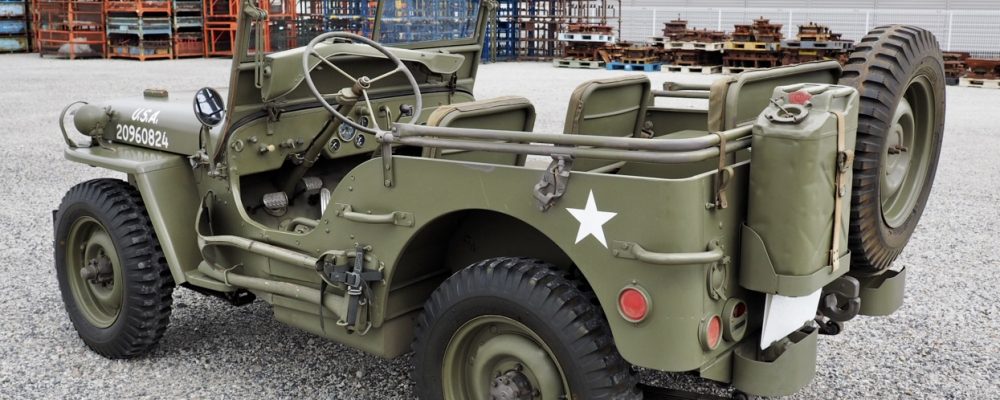
A groundbreaking invention born out of necessity in wartime— exploring the historical origins of the Willys MB, the original 4WD that roamed the Earth with unmatched freedom.
The Willys MB, produced from 1942 to 1945 (commonly known as the “Jeep” and officially designated as the U.S. Army Truck, 1/4 Ton, 4×4), was a military vehicle developed and deployed in combat during World War II alongside the Ford GPW.
In 1937, the U.S. Army solicited specifications from domestic automakers for a new vehicle aimed at providing mobility to military forces. On July 11, 1940, the finalized requirements were formally sent to 135 American automotive companies. After a competitive process involving extensive development and testing, three companies emerged as key contenders: American Bantam Car Company, Willys-Overland, and Ford. Ultimately, Willys secured the primary production contract.
However, by October 1941, it became clear that Willys alone could not meet the volume demanded by the U.S. Army. Ford was brought in to assist with production, building vehicles under license from Willys. The Ford-produced model was designated “GPW,” with the “W” representing Willys as the design originator. During World War II, Willys produced approximately 363,000 MB units, while Ford contributed around 280,000 GPWs—together forming the iconic American military Jeep fleet.
Equipped with a 3-speed manual transmission, the Willys MB could cruise rugged terrain at speeds nearing 100 km/h, ford rivers up to 50 cm deep, and climb gradients of up to 60 degrees. It came standard with an array of features that demonstrated its extraordinary versatility: blackout light systems to prevent detection by enemy aircraft while maintaining spacing between vehicles, infrared blackout driving lamps, trailer lighting connectors, spark-suppression components, and shielded spring shackles for improved durability.
The Jeep was adopted not only by the U.S. Army, but also by the Navy, Air Force, and Marine Corps. Infantry regiments, in particular, were issued an average of 145 units each. So widespread was its use that German soldiers on the European front reportedly believed that every American soldier had his own Jeep.
The Jeep served in countless roles—troop transport, reconnaissance, towing artillery, laying communication cables, clearing forests, operating water pumps, functioning as a field ambulance or light tractor, hauling trailers, water, fuel, and ammunition. Its flat hood often doubled as a map table for commanders, an altar for Sunday field services, a poker table for off-duty troops, or even an emergency operating table—serving virtually any purpose the battlefield demanded.
Postscript – A Visit with the Fully Restored 1944 Willys MB
Through our deep-dive into overseas archives and historical documentation—including those covering WWII and the Korean War—we uncovered remarkable facts surrounding the Willys MB. After the end of World War II in 1945, the U.S. military was faced with the issue of surplus vehicles—thousands of Willys MBs and Ford GPWs that had been deployed across the globe. Many of these were sold off as surplus, abandoned in foreign countries, or tragically disposed of by being pushed off ships into the Atlantic or Pacific Ocean.
The MB we introduced in this feature reveals another small but fascinating piece of this puzzle: the fuel filler is located under the driver’s seat rather than on the exterior body—an intentional design choice. It is said this placement was adopted for safety reasons due to the widespread popularity of smoking among American soldiers at the time. Details like this help us distinguish military Jeeps from their later civilian counterparts.
Another captivating detail is the reversible headlight. If repairs were needed at night, the headlights could be flipped to illuminate the engine bay—a brilliantly practical wartime solution. Further design traits unique to WWII-era MBs include rounded rear corners, external handles to help manually extract the vehicle from mud, and dual roof bows to raise the canvas and prevent it from touching the heads of front-seat occupants. These are all testaments to the thoughtful, battle-tested design born out of necessity.
It is through this extraordinary vehicle—preserved in perfect running condition—that we were granted a direct, tangible connection to history. For that, we owe sincere gratitude to the current owner, who has kept it alive with reverent care.
Over the past 12 years, the owner—a seasoned mechanic—has fully integrated the Willys MB into his lifestyle, driving it daily and even participating in military vehicle events under its own power. Now, with life taking him into a new chapter, he faces the heart-wrenching decision to part with his beloved machine—not by choice, but by necessity.
He will only entrust this irreplaceable piece of living history to someone who feels the same passion and responsibility for what it represents. It will take a special new owner—someone who understands not just the mechanics, but the soul of this Jeep—for him to say, “Yes, I can let it go… to this person.”
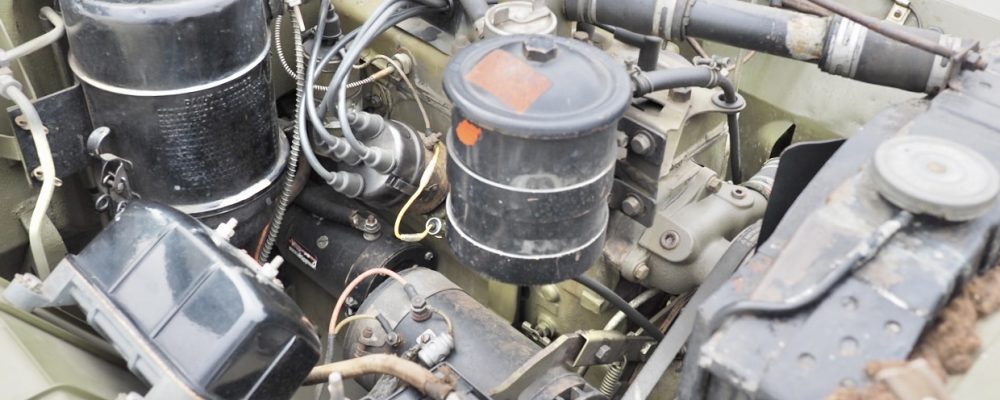
A museum-grade, fully restored Willys MB—lovingly maintained by a professional mechanic for over 12 years—resurrected after more than 80 years with unmatched historical integrity and mechanical perfection. This 1944 Willys MB isn’t just a vintage military vehicle—it’s a fully operable, daily-drivable rolling piece of World War II history that shatters every conventional expectation of what a classic can be.
“Check this out!” the veteran owner excitedly shares a collection of military items—everything from firearms (of course, model guns!) to period documents and wearables.
Such delightful stories make for an unforgettable experience. Don’t miss the chance to visit and see this exceptional 1944 Willys MB in person—come to Gunma Prefecture and enjoy the ultimate classic military vehicle experience!
This highly valuable 1944 Willys MB is currently located in Gunma Prefecture.
As this is a private transaction, there will be no consumption tax or additional fees.
However, the buyer will be responsible for the pro-rated automobile tax (¥8,000 per year for 1-number plates) and the recycling deposit (¥0 if not deposited).
Also, the buyer will need to arrange for transportation; however, our company, which is part of the same business, offers classic car transport services using our own flatbed truck. If needed, please feel free to inquire.
Regarding Inquiries…
This vehicle is listed on the Estate Sale Supremacy®, a cross-border e-commerce platform for classic and collectible cars.
What is Estate Sale Supremacy®?
Estate Sale Supremacy® introduces vehicles that hold the owner’s deep sentiment through interviews and videos, offering a Japanese version of the North American culture of estate sales, which involves organizing possessions and hearts. Unlike the typical low-price buyouts or undervalued transactions, Estate Sale Supremacy® faithfully conveys the owner’s feelings and ensures memories are preserved while passing the vehicle onto the next generation.
We conduct detailed interviews with the current owner regarding past maintenance records, repairs, and accident history. If there have been significant accidents or if the current ownership period is unusually short, we may decline coverage to ensure that the buyer receives the utmost confidence in their purchase.
This article is based on an interview conducted on April 10, 2025, at 1:00 PM (cloudy), during a 3-hour session with the owner. Please note that due to the limited time for inspection, the accuracy of the vehicle’s condition may not be 100%. Similarly, the comments made in the article are based on the weather conditions during the interview and the writer’s personal perspective.
For any inquiries or to arrange an inspection, please contact us via the form at the bottom of this page.
Since this is a private transaction, to prevent any unnecessary inquiries, vehicle inspections will only be available for buyers who are seriously considering purchasing.
Thank you for your consideration.







